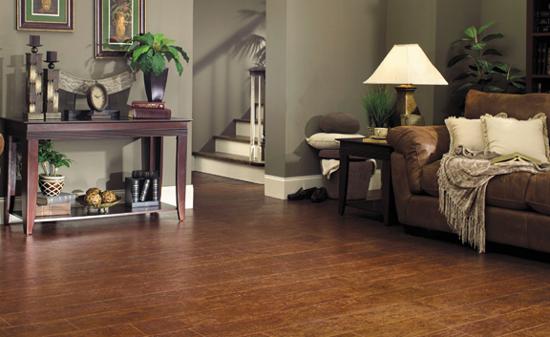Cork on the Rise - February 2009
By Brian Hamilton
Although U.S. marketshare for cork flooring is still fairly small, cork is beginning to show up in everything from corporate boardrooms to bedrooms. Part of its growing popularity comes from its status as one of the most sustainable floorcoverings on the market. Cork floors are made of the ground up leftovers from the bottle stopper industry, most of which is based in Portugal. And cork, which is actually produced from the bark of the cork oak tree, is classified as a rapidly renewable resource, a valuable attribute for green construction. Each cork oak tree can have its bark harvested every nine years.
Last year cork had domestic retail sales of roughly $80 million to $90 million, wholesale sales of about $45 million (about 2% of the wood flooring market, according to Santo Torcivia/Market Insights), and accounted for about 11 million square feet of flooring, according to Piet Dossche, CEO of Dalton, Georgia based US Floors, who recently sold 25% of his company for $10 million to Amorim, the world’s largest producer of cork. Amorim saw the investment as a way to expand cork sales in the U.S. and US Floors secured a long term supply of cork.
Cork over the years has been much more accepted in Europe. For example, Germans, by themselves, buy 60 million square feet annually. The same per capita sales in the U.S. would require sales of 225 million square feet, more than a 20 fold increase.
Tradition and awareness of the product make a big difference.
“In Europe cork floors have been mass produced for 350 years, but in the U.S. it’s been about a hundred,” said Randy Gillespie, one of the owners of cork flooring producer Expanko. “In the U.S. it’s been more of a fad. Also, no (homogenous) cork production is done in the U.S., so it’s a little more difficult to market it and support it domestically.”
Cork sales, which make up a tiny share of resilient sales, are likely to hold up fairly well, given the growing interest in green building and the U.S. Green Building Council’s LEED certification program. In addition, cork captures people’s imagination. Designers love it. It’s intricate and detailed yet creates a sumptuous look unlike any other flooring. New designs and constructions keep cork offerings dynamic. A number of producers are even creating hybrids of, for example, cork and rubber.
“In a commercial setting, we see it becoming more accepted and widely used,” Gillespie said. In addition to its sustainability characteristics, cork is also softer than other hard surfaces and deadens noise.
In addition, Dossche said, cork that’s constructed with high density veneers and finished with quality UV or ceramic coatings can handle high traffic areas.
Dossche also believes that cork can make great inroads in homes and be used nearly everywhere. Cork tiles and floating floors are also beginning to make headway in urban lofts and apartments.
Copyright 2009 Floor Focus
Related Topics:Coverings
